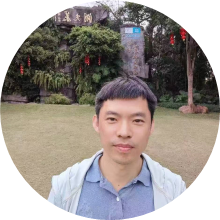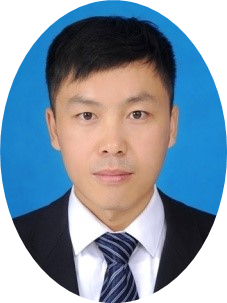

Prof. Yu Liu
Member of the Big Data and Science and
Technology Communication Committee of China Association for Science and Technology
Northeast Electric Power University, China
Biography: Liu Yu, born in 1984, Doctor of Engineering, graduated from Dalian University of Technology in 2015, presided over and participated in more than 20 projects of the National Natural Science Foundation of China, provincial and ministerial projects, and enterprise lateral projects, etc. He has published more than 50 papers in high level academic journals such as International Journal of Advanced Manufacturing, Ironmaking & Steelmaking, etc., including 1 ESI highly cited paper, 1 book and 8 authorized invention patents. He has published more than 50 papers in International Journal of Advanced Manufacturing, Ironmaking & Steelmaking and other high-level academic journals, including 1 ESI highly cited paper, 1 monograph, 15 invention patents applied for and 8 invention patents authorized. He is a member of the Big Data and Science and Technology Communication Committee of China Association for Science and Technology, a member of the organizing committee of the 2020 International Conference on Mechanical Engineering and Intelligent Manufacturing, and a special expert of the Chemical and New Materials Expert Committee of the Sino-Bojian Think Tank. He was awarded “Jilin City Science and Technology Workers Entrepreneurship and Innovation Competition Award”, “Dongdian Scholars” three levels and other honors, Northeast Electric Power University classroom quality excellent teachers. He is a member of the organizing committee of AEIC International Conference on Materials, an expert of Jilin Science and Technology Department, an expert of International Journal of Advanced Manufacturing Technology, Journal of Materials Research and Technology, etc. He is also a member of the organizing committee of AEIC International Conference on Materials, International Journal of Advanced Manufacturing Technology, Journal of Materials Research and Technology, Materials and other internationally recognized academic journals reviewer.

Assoc. Prof. Dongdong Zhang
Member of Composites and Alloys Testing Branch,
Jilin Society of Analyzing and Testing Technology
Northeast Electric Power University, China
Biography: Dongdong Zhang, graduated from School of Materials, Jilin University in 2018, mainly teaches courses including Engineering Materials, Metallic Materials for Power Plants, Metallic Materials for Power Plants, and Methods of Materials Analysis, and other specialized courses and specialized basic courses; mainly engaged in the preparation technology of particle-reinforced metallic materials, surface laser treatment modification of metallic materials and basic theories. Since 2017, he has published 15 SCI-indexed academic papers as the first author or corresponding author, and authorized 3 invention patents. Presided over or participated in the completion of one national project, four provincial research projects. He is a member of Composites and Alloys Testing Branch of Jilin Society of Analysis and Testing Technology, and has been invited to serve as a member of Materials Science and Engineering A, Journal of Materials Science and Technology, Journal of Materials Research and He has been invited to be the reviewer of Materials Science and Engineering A, Journal of Materials Science and Technology, Journal of Materials Research and Technology and Materials Today Communications.

Assoc. Prof. Md. Hasanuzaman
World's Top 2% Scientists by Stanford
University & Elsevier (2020-2022)
Universiti Malaya, Malaysia
Biography: Dr. Md. Hasanuzaman is currently working as Associate Professor at the UM Power Energy Dedicated Advanced Centre, Higher Institution Centre of Excellence (HICoE), University of Malaya, Malaysia. He was listed among the World's Top 2% Scientists by Stanford University & Elsevier for the years 2020, 2021 & 2022. Dr. Hasan served as the Programme Coordinator Master of Renewable Energy, Double Degree Programme with Master of Energy Science, Kyoto University, Japan from April 2012 to September 2020. He earned his PhD and an M. Eng. Sc. from the University of Malaya (UM), Malaysia and a B. Sc. in Mechanical Engineering from Bangladesh University of Engineering and Technology (BUET), Bangladesh. He is a recipient of UM Excellence Award 2012 for his outstanding achievement in his PhD; merit Scholarship from Bangladesh Scholarship Council and Nippon Foundation, Japan in 2003-2004. Dr. Hasan’s research interests include Thermal Engineering, Renewable Energy, Solar Thermal, Energy Policy, Energy and Environment, Smart Transport & Decarbonization Policy, Hydrogen Vehicle, Electric Vehicles, EV Battery. He is an Associate Editor of the Alexandria Engineering Journal, Elsevier; Guest Editor of Renewable Energy. His 2 books: (1) Technologies for Solar Thermal Energy, 2022 and (2) Energy for Sustainable Development, 2020 published by Elsevier.